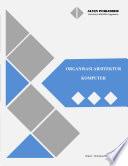
Physik und Physikalisches Praktikum
Mit Fehlerrechnung und Statistik Ein Lehrbuch speziell für MTA
Es gibt in der Bundesrepublik bisher kein Physildehrbuch, das speziell auf die Bedürf nisse von MTA-Schüler(innen) zugeschnitten ist. Dieser Zustand ist sowohl für die Lernenden als auch für die Lehrkräfte gleichermaßen unerfreulich. Dies ist der Grund für das Entstehen dieses Buches. Es soll den MTA-Schülerinnen und -Schülern er möglichen, sich neben dem Unterricht in einer verständlichen, ausführlichen und ihrem Niveau entsprechenden Darstellung mit der Physik vertraut zu machen. Wir haben außerdem den in Physikbüchern bisher nicht üblichen Versuch gemacht, neben dem Vorlesungsstoff ein dazu passendes Praktikum darzustellen und zwar mit echten Meßergebnissen sowie mit der dazugehörigen Auswertung und der entsprechenden Fehlerrechnung. Wir stellen Ihnen dazu insgesamt 23 Praktikumsversuche vor. Die Messungen sowie Auswertungen des Praktikumteils sind von den Schülerinnen und Schülern der Lette Schule in Berlin unter Aufsicht des Autors durchgeführt worden. Um den Bedürfnissen besonders derjenigen zu entsprechen, für die dieses Buch gedacht ist, nämlich der MT A, haben wir zwei Schülerinnen der Lette-Schule als Mitarbeiterinnen gewinnen können. Sie haben geholfen, das vorliegende Buch - was Gliederung, Darstellung und Verständlichkeit angeht - mitzugestaIten. Die beiden haben inzwischen ihr Examen abgelegt. Viele Lehrende sind im MTA-Unterricht häufig nur nebenberuflich tätig. Ihnen soll das vorliegende Buch ein wenig helfen, einen möglichst optimalen Unterricht bieten zu können. Vielleicht läßt sich in der Bundesrepublik mit Hilfe dieses Buches auf dem Gebiet des Physikunterrichts für das medizinische Fachpersonal eine gewisse Verein heitlichung erreichen.
- ISBN 13 : 3642683983
- ISBN 10 : 9783642683985
- Judul : Physik und Physikalisches Praktikum
- Sub Judul : Mit Fehlerrechnung und Statistik Ein Lehrbuch speziell für MTA
- Pengarang : Bernd Ramm,
- Kategori : Science
- Penerbit : Springer-Verlag
- Bahasa : de
- Tahun : 2013
- Halaman : 316
- Google Book : https://play.google.com/store/books/details?id=jqepBgAAQBAJ&source=gbs_api
-
Ketersediaan :
Es gibt in der Bundesrepublik bisher kein Physildehrbuch, das speziell auf die Bedürf nisse von MTA-Schüler(innen) zugeschnitten ist.









